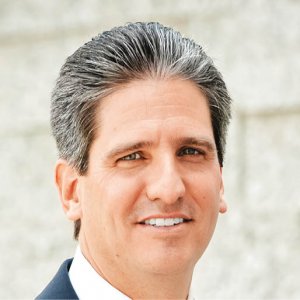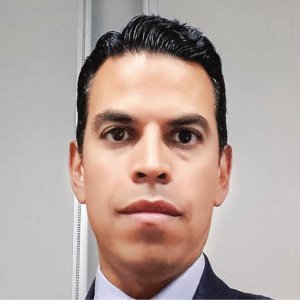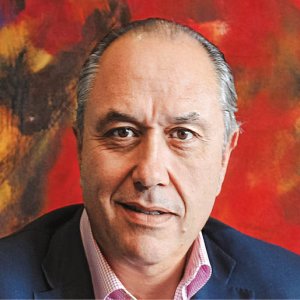Sustainable Concrete for Stronger Foundations

STORY INLINE POST
Q: How can Mexico bridge its infrastructure gap in the next few years?
A: The greatest challenge is to incentivize the development of quality infrastructure throughout the country that will withstand Mexico’s particular climate and environment. The money destined for infrastructure at the moment is being used more on improving existing structures rather than building new ones. It is important to take into consideration the quality of the infrastructure project before allocating funds. Last year’s Public Works reform bill that is now awaiting Congressional approval will require that investors consider not only the initial cost but also that of the structure’s entire lifecycle when bidding in a tender. That will allow companies to plan the long-term operating and maintenance costs. The key to developing infrastructure is a long-term vision and investment through project management. The private sector will play an important role bringing new and innovative infrastructure throughout Mexico. Establishing clear regulations and processes will not only speed up development but will also save money by reducing the need to constantly inject funds into repairing and improving existing infrastructure.
Q: What steps has CEMEX taken to become a more environmentally conscious company?
A: CEMEX faced the challenge of lowering the environmental impact of its global operations by developing a greater variety of environmentally friendly materials. When we first started down this road, we could either modify the elements used to create the materials or change the formula of the products themselves. The first option involved changing the type of fuel the company used. We began incorporating less aggressive fuels, which drastically decreased our carbon footprint. Managing inorganic waste is the number one challenge in urban cities, especially since it is growing at an annual rate of 1.6 percent. CEMEX began recycling the waste and not only did we reduce the amount but also added value to it by converting it into fuel that reduced the company’s CO2 emissions. About 17 percent of CEMEX’s fuel usage in 2015 came from alternative fuels, such as FIRSU, which is a type of inorganic waste. CEMEX consumes around 27.7 percent of alternative fuel resources worldwide. Developing countries have much lower percentages because the waste is not preselected. CEMEX developed a method of separating different types of waste to be transformed into fuel.
The second option involved electrical energy, which traditionally comes from fossil fuels. In Mexico, companies are switching to clean energy sources. CEMEX began by constructing the 250MW capacity Eurus wind farm in Oaxaca and later participated in the La Ventika projects in Nuevo Leon. These developments have allowed us to generate 35 percent of our electrical energy from renewable resources, which is a great advancement since CEMEX is one of the top consumers of electrical energy in the country.
Q: How has CEMEX innovated its processes to create more sustainable infrastructure?
A: Mexico is rich in resources for creating additives, such as volcanic rocks known as pozzolana, steel slag and fly ash, which we have integrated into our products to reduce CO2 emissions. Apart from improving our materials, we have developed methods to recycle waste from other industries that have eliminated over 8 million tons of CO2 from our products, which equals the emissions of 1.5 million cars a year.
CEMEX also has created laboratories in several countries, such as the Centro de Tecnologia del Cemento y Concreto (CTCC) in Mexico, to conduct research on cement, concrete and the application of various additives. These labs are part of our R&D collaboration network, headed by Swissbased CEMEX Research Group. Roads made using concrete instead of asphalt are 8-10 percent more expensive but concrete’s durability drastically reduces repair expenses, making it a wiser investment. Traditional concrete is more durable, absorbs less heat, is cheaper and saves around 3 percent of fuel consumption in the long term. Concrete has the ability to lower heat 3-12 percent in large cities by reflecting sunlight, which would otherwise have translated to higher energy consumption. It can also reduce lighting expenses up to 30 percent due to its lproperties that reflect three times more light compared to asphalt.
On occasion, water can infiltrate concrete and damage infrastructure. We developed water-resistant products that reduce this phenomenon. These types of innovations will improve the construction of green areas, such as roof gardens, and increase the efficiency of homes while reducing humidity. Our contribution to acoustic and thermal additives allows concrete to act as a natural barrier, lowering temperatures by around 35-40 percent. We will continue to create solutions that contribute to the development of sustainable cities.
Q: What opportunities does CEMEX expect in the energy sector?
A: Mexico has made the decision to reduce its electrical energy emissions and the Clean Energy Certificates (CELs) are related solely to emissions generated from producing electrical energy. There is speculation regarding the way in which these certificates could affect companies and if these certifications might require divestments. We do not plan on becoming an energy supplier but instead look to meet our own energy needs. Nevertheless, we see a significant opportunity in collaborating on these types of projects.
Q: What role has CEMEX played in the development of efficient and quality transport infrastructure?
A: CEMEX has been working closely with the relative authorities to develop sustainable transport. The usage of Rapid Transit Bus (BRT) systems in Mexico has grown rapidly, since the cost of investment of a traditional metro subway system is around 10-15 times higher than a BRT, and they can reduce transit times within a city by up to 50 percent. Various cities are also using traditional diesel buses but Monterrey has incorporated hybrid units that use natural gas instead of diesel, reducing pollution by approximately 20 percent.
CEMEX works together with the authorities to find the most efficient forms of transportation that require the lowest amounts of investment without compromising the overall impact. The two main barriers are problems involving road infrastructure and urbanization. Cities are growing much faster than original urban plans had foreseen and are failing to meet the demands of the population. We are developing roads in which we substitute more than half of the aggregates with recycled car tires. CEMEX completed a road in Guanajuato built with more than 2,000 recycled car tires mixed with concrete. Not only will this reduce the amount of waste tires but this material is more skid resistant, increasing user safety. In Mexico, CEMEX recycles as much as possible from original roads. In Europe, the recycling of waste from larger infrastructures is rapidly gaining popularity, especially since these countries have more advanced recycling methods.
Q: How is CEMEX involved in the transformation of Mexico’s infrastructure?
A: CEMEX focuses on the construction of new resilient infrastructures, as well as protecting the country’s aquifers, reducing the city’s waste management problems and helping the government develop more efficient projects. We offer solutions to this repair cycle by developing quality products that will prevent the problem from the outset. We have participated in PPPs alongside the Mexico City government to develop various infrastructure in which we built the pavement, water drains and gardens, and maintained the infrastructure for the duration of the contract. One of the largest problems with infrastructure development is that a great deal of money that is originally assigned to infrastructure is wasted or used inefficiently. Smaller states and local governments do not have the budgets for transport or sustainability departments, so CEMEX helps them by offering various types of support.





















